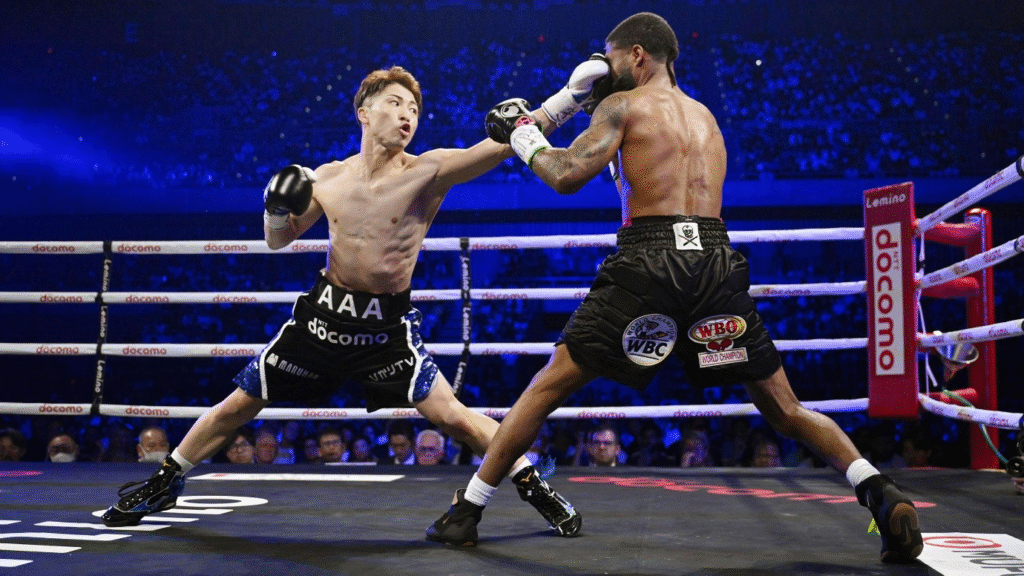Boxing stands atop the global rankings as the most challenging sport in the world. Its reputation is forged not only through physically punishing workouts and bouts but also through the relentless mental demands that push athletes beyond their known limits. In 2025, expert panels and scientific analysis have continually placed boxing in the number one spot—outpacing sports like MMA, rugby, ice hockey, and American football. This article delves deep into why boxing reigns supreme for toughness, pain, discipline, and human potential.
When assessing sports for toughness, analysts consider several dimensions:
- Physical demand
- Mental toughness
- Skill complexity
- Injury risk
- Training intensity
By these measures, boxing receives a near-perfect rating with a total toughness score of 49 out of 50 on leading scales, including all-time highs for mental resilience, injury risk, and training demands.
The Physical Demand: Cardio, Strength, and Reflexes
Boxing demands cardiovascular output on par with long-distance runners and Olympians. Daily training routines include running, skipping rope, mobility drills, sparring, pad work, and grueling rounds of heavy bag striking. Success in the ring hinges on explosive muscle strength—boxers pack the power of lifters, the speed of sprinters, and the agility of gymnasts. All movements must be precise and efficient; with every punch and dodge, boxers demonstrate full-body engagement that pushes them into peak physical condition.
Fatigue sets in fast, especially during three-minute rounds, but the athlete must summon enough stamina to sustain relentless motion. Defensive skills also require technique and core strength: weaving, ducking, and countering against an opponent’s barrage. Take into account the non-stop training schedule—most elite boxers spar and condition every day, often for years on end.
Mental Fortitude: The Psychological Edge
No other sport demands that athletes continuously face the threat of being knocked unconscious. Each match is a test not only of muscle and mind but also of nerve and emotional grit. The psychological weight of the ring—the anticipation, the fear, the pain tolerance—makes boxing a uniquely harrowing mental task. Boxer Sally, who balances physical and mental training daily, describes boxing as 20 percent physical exertion and 80 percent mental exertion, capturing the emotional demands required to cope with exhaustion, pain, and uncertainty.
In the leadup to a bout, boxers visualize strategies, analyze opponents, battle self-doubt, and steel themselves against anxiety. Every missed punch or defensive lapse can lead to disaster, unlike in team sports where responsibility is spread among multiple athletes. The psychological pressure is constant, and the mental stamina to keep advancing is what separates champions from bystanders.
Injury Risk: Living with Pain
Boxing matches and training are riddled with injury hazards. Broken noses, concussions, cracked ribs, sprained wrists, and eye trauma are occupational risks. The ability to withstand and recover from injury is central to a boxer’s longevity. The sport’s culture expects athletes to play through pain—and not just mild pain, but the sort that leaves lifelong scars.
Even sparring sessions routinely put competitors at risk of serious harm. Unlike sports with protective gear, boxers rely on hand wraps and gloves, but the head and body remain largely exposed. Rehabilitation, pain management, and emergency medical attention are all woven into a boxer’s journey.
Training Intensity: The Daily Grind
To reach elite levels, boxers often endure multi-hour training sessions, incorporating everything from plyometrics to tactical drills. A typical regimen may include:
- 5–10 km runs for stamina
- Repeated sets of planks, crunches, squats, and push-ups
- Pad routines to perfect timing and defense
- Punching-bag intervals and combination drills
- Extensive sparring with partners
- Shadowboxing and footwork practice
The sport is relentless; one missed day means falling behind. The grind is not only physical but deeply emotional—pain and doubt are constant companions, and only those who contend with them stand a chance at lasting success.
Skill Complexity: The Sweet Science
Despite its violent exterior, boxing is known as the Sweet Science due to the intricate strategies required. Athletes must master timing, precision, footwork, angle creation, defensive positioning, and reading opponents’ intentions. No punch is accidental—jabs, hooks, crosses, and uppercuts are calculated maneuvers, often part of elaborate fight plans.
Boxers train their reflexes for split-second decisions, employing feints, rhythm changes, and distance management. Advanced skills in reading movements and countering attacks create nearly infinite tactical possibilities. In matches, the ability to quickly adapt is crucial. Champions routinely overcome adversity not only with muscle, but with cunning and agility.
The Mental and Emotional Toll
Veteran fighters and sports psychologists note how boxing creates unparalleled mental strain. The emotional struggle—fear of defeat, coping with pain, dealing with public pressure—builds a psychological wall that only a select few can climb. Neurological studies reveal that boxers exhibit high mental toughness scores, closely associated with personality traits such as resilience, neuroticism (drive and focus), and agreeableness (teamwork in training and sparring).
Personal Stories and Real-World Examples
Champions from every era recount stories of sacrifice: months away from family, training in isolation, overcoming serious injuries—all for a few moments in the spotlight. In 2025, athletes like Jaismine Lamboriya, India’s world gold medallist, exemplify this sacrifice and perseverance. Lamboriya’s journey involved not just physical conditioning but a mental commitment to grit and glory, echoing the challenges faced by all top-tier boxers.
Distinguishing Boxing from Other Sports
Other demanding sports feature aspects of toughness, but no combination of requirements rivals boxing. In MMA, athletes fight in multiple disciplines but have more ways to escape or recover from combat during matches. Football and rugby are team-oriented, with shared responsibilities and support. Gymnastics and swimming demand endurance and technique but do not subject athletes to direct, repeated physical confrontation with an adversary. Boxing is one-on-one—the ultimate test of preparation, resilience, and survival.
ESPN and Scientific Rankings
Numerous ranking systems confirm boxing’s supremacy. ESPN’s exhaustive analysis of sixty sports measured ten key attributes and consistently awarded boxing the highest overall scores, particularly in nerve, durability, strength, and power. The latest assessment places boxing atop with a precise rating of 72.38—outpacing even ice hockey and American football for difficulty.
The Psychological Aftermath: Beyond the Ring
Boxers often confront mental health challenges long after their careers end. Rehabilitation, identity issues, and coping with chronic pain or head trauma are realities for many. Nevertheless, those who thrive in boxing possess a tenacity and inner strength envied by athletes across all sports disciplines.
The Future of Boxing: 2025 and Beyond
As sports continue evolving, boxing maintains cultural relevance as a symbol of grit and human potential. Major events—such as the upcoming IBA Elite World Championships in Dubai—draw global audiences, inspiring new generations to test themselves against the toughest arena.
Conclusion: Boxing as the Pinnacle of Toughness
In summary, boxing remains the toughest sport because it:
- Demands excellence in physical fitness, mental endurance, technical skill, and pain tolerance
- Places athletes alone against opponents with a singular objective: survival and victory
- Requires a daily commitment to overcoming injury, psychological strain, and fear
Boxing’s legacy is built not just in the victories, but in the process—the hours of preparation, the emotional battles, and the gladiatorial spirit of the ring. For toughness, pain, and pure human challenge, boxing is, and will remain, at the very top.
Mixed Martial Arts (MMA) has surged in global popularity over the past two decades, cementing its status not only as a spectator craze but as one of the most challenging sports in existence. 2025 sees MMA standing at the intersection of ancient martial tradition and cutting-edge sports science, uniquely demanding a blend of physical versatility, mental resilience, adaptability, and a near-obsessive commitment to self-improvement. But what exactly elevates MMA to the uppermost echelons of sporting difficulty, and why do both analysts and athletes recognize it as one of the world’s toughest challenges?

